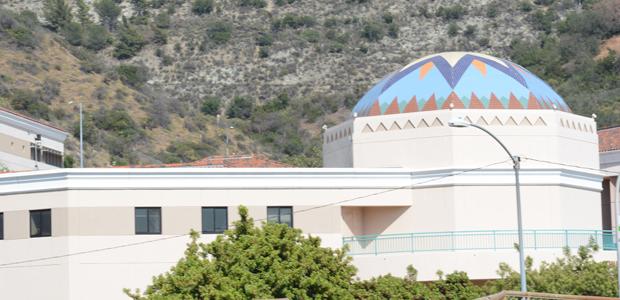With sprinklers showering elaborate landscapes and water flowing endlessly as the average person leaves the faucet running while brushing their teeth, most Californians do not worry about where their water supply comes from.
In January, Gov. Jerry Brown declared a drought state of emergency as the state faced its driest year in recorded history. Urging all Californians to reduce their water use by 20 percent, Brown further issued an executive order in April, requiring the state to double its drought efforts.
Under the order, California residents are advised not to wash their vehicles at home, but to instead take advantage of car wash businesses that recycle water, to limit how much they irrigate their lawns and landscapes, and to turn off fountains unless recycled water is available. The mandate also asks hotels and restaurants to only serve customers drinking water upon request.
The order states that the Water Resources Control Board is required to dispatch voluntary water transfers to farms in need — potentially preventing an agricultural disaster. Furthermore, the board is responsible for helping water suppliers draft drought plans, which mostly entails limiting wasteful water practices.
According to Glendale Water and Power, past state drought issues resulted in the city council enacting phases one and two of the city’s water conservation ordinance between 2008 and 2009. This led to an 18 percent consumption decline. Phase one is a voluntary conservation effort while phase two is mandatory and only allows for landscape watering three times a week. Glendale’s current “No Water Waste” policy includes 14 water use restrictions that are to be in effect at all times, including those mentioned in Brown’s executive order.
The policy further insists that water leaks be repaired within three days. The Environmental Protection Agency reports that the average American household’s leaks can result in 10,000 gallons of water waste — up to one trillion gallons collectively.
In an effort to ease the drought crisis, Glendale’s Assemblyman Mike Gatto introduced AB 2282, a water-recycling bill that would require the Department of Housing and Community Development and the California Building Standards Commission to incorporate “mandatory standards of recycled water infrastructure.” Newly constructed single-family and multifamily residential buildings and both public and commercial buildings would have to include water recycling pipes and a design that is conservation-friendly.
The bill was passed in April by the Assembly Business, Professions, and Consumer Protection Committee with a unanimous vote of 14-0.
“Californians traditionally believe in conserving and making sure we use all the resources at our disposal,” Gatto said. “We’re in the middle of a drought and yet we still do things like wash our cars with drinking water and we hose down our porches with drinking water. It would just make more sense to me if we could use recycled or reclaimed water.”
According to Dan Padilla, manager of maintenance and operations at GCC, the campus began to use reclaimed water in 1999. The college’s newly constructed buildings will adopt more efficient water conservation systems, as they will include water recycling pipes and low-flush toilets and urinals that will use reclaimed water.
Nelson Oliveira, the director of facilities, says that having low-flow toilets and urinals rather than waterless ones both conserves water and “preserves the integrity of the pipe,” meaning there is less pressure and damage on the pipes. Sinks, however, will continue to use clean water.
“A large portion of our irrigation is reclaimed water, which is better for the plants because it has more nutrients,” Padilla said.
In the city of Glendale, reclaimed water, which is wastewater, is extracted from the sewer, sterilized, and then chlorinated to prevent bacterial growth.
“It’s not safe to drink but it’s safe if it gets on your hands,” Padilla said. “It’s not dangerous in any way.”
According to Oliveira, the Board of Trustees affirmed that new construction should be LEED certified, meaning the college has to be as green as possible.
LEED, which stands for Leadership in Energy and Environmental Design, is a certification process developed by the U.S. Green Building Council, a non-profit organization in Washington, D.C. The council’s goal is to increase environmental awareness among architects and building contractors, which will ideally lead to more energy-efficient and water-conservation friendly construction designs and practices.
According to Oliveira, GCC meets LEED’s requirements of sustainability, water conservation, and energy efficiency. Due to its successful energy-saving programs, the campus was featured in the Southern California Gas Company’s Annual Municipal Green Building Conference and Expo.
Despite California’s intense struggles with the drought, it is not the only state suffering from water shortages. The Colorado River and its reservoirs, which the National Geographic says provide water for nearly 30 million people in seven different states, including California, is experiencing dangerously low levels.
American Rivers, a non-profit organization that seeks to protect and restore rivers in the United States, named the upper Colorado River as the second most endangered of all the nation’s watercourses. California’s own San Joaquin River tops the list.
The organization attributes outdated management, overuse, and flow diversions as the primary threats to both rivers. With high urban populations, their water supplies will not be able to meet growing consumer demands.
The Metropolitan Water District of Southern California, which provides water to various parts of Los Angeles, including Glendale, and Orange, San Diego, San Bernardino, Ventura, and Riverside counties, also relies
on the Colorado River Basin
|for its supplies.
Brown also attributes climate change to the growing drought problem and the increasing number of wildfires. The New York Times reports that global warming studies estimate the Colorado River’s flow will decrease between five 5 and 30 percent as a result of rising temperatures. Lake Mead’s water levels alone have been predicted to drop 20 feet this year.
Higher temperatures and lack of rain are also linked to the wildfires that rampage California. Despite having already responded to over 1,500 fires this year, according to the San Francisco Chronicle, the California Department of Forestry and Fire Protection expects more fires over the summer. As a result, the department will hire nearly 100 additional personnel to help put out the fires.


